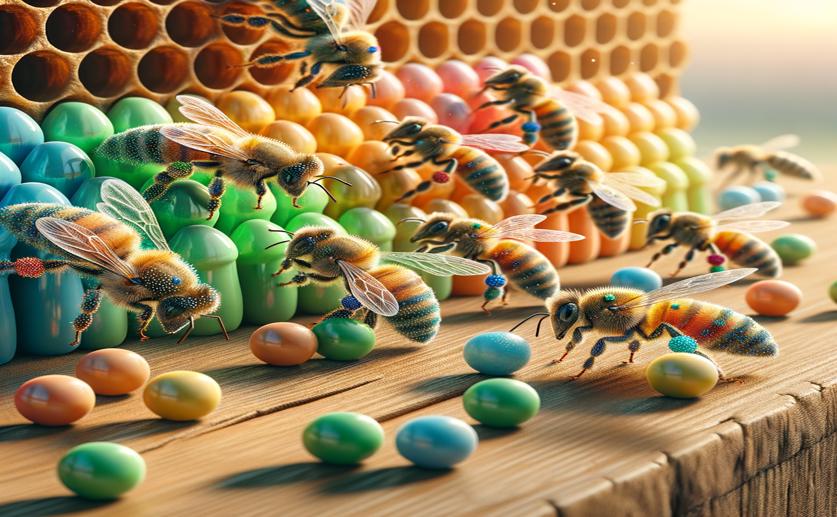
How Different Supplements Affect Honey Bee Productivity
Jenn Hoskins
30th May, 2024

Image Source: Natural Science News, 2024
Key Findings
- The study by Injibara University evaluated the impact of different supplemental feeds on honey bee colonies during food scarcity
- Colonies fed with a diet including stinging nettle (T4) showed the highest performance, with superior feed intake, nectar, pollen, honey areas, and honey yield
- Colonies on the T1 diet, containing roasted barley and spiced pea powder, had the lowest performance indicators and honey yield
AgricultureEnvironmentAnimal Science
References
Main Study
1) Effect of various supplements on productive performance of honey bees, in the south Wollo Zone, Ethiopia.
Published 29th May, 2024
https://doi.org/10.1371/journal.pone.0303579
Related Studies
2) Comparison of nutritional properties of Stinging nettle (Urtica dioica) flour with wheat and barley flours.
3) Nutritional and pharmacological importance of stinging nettle (Urtica dioica L.): A review.
4) The Effect of Supplementary Feeding with Different Pollens in Autumn on Colony Development under Natural Environment and In Vitro Lifespan of Honey Bees.



 17th May, 2024 | Jenn Hoskins
17th May, 2024 | Jenn Hoskins